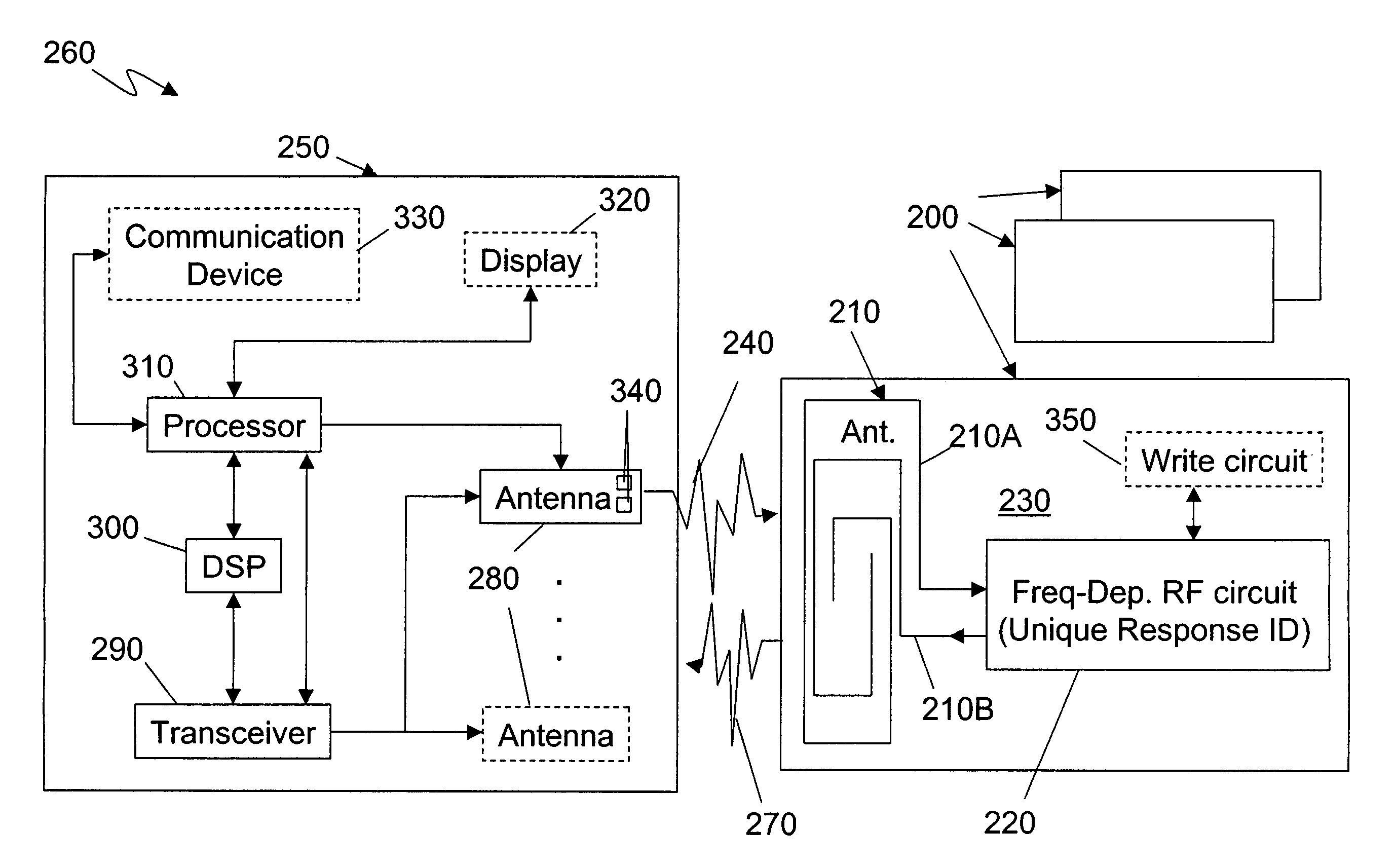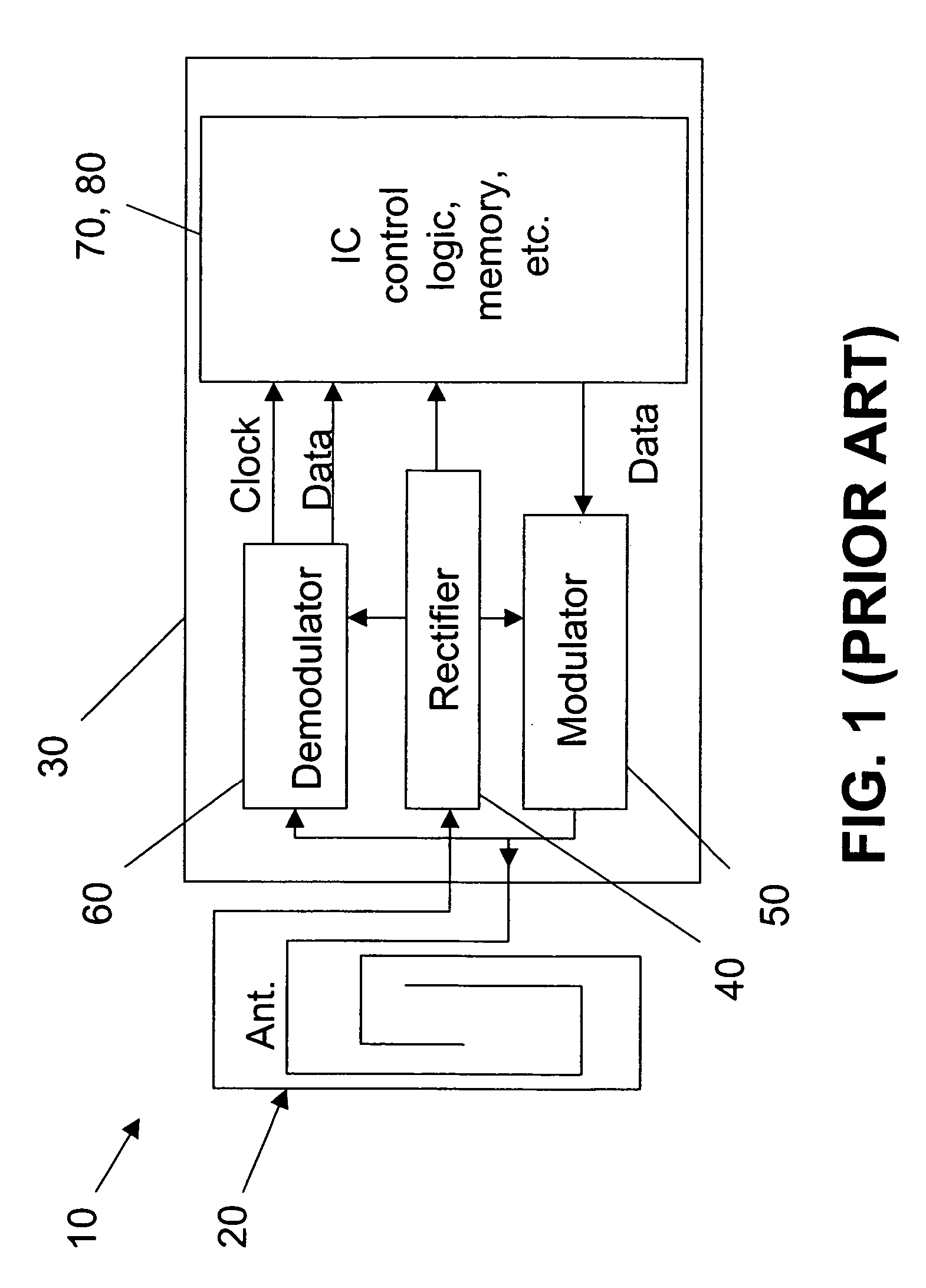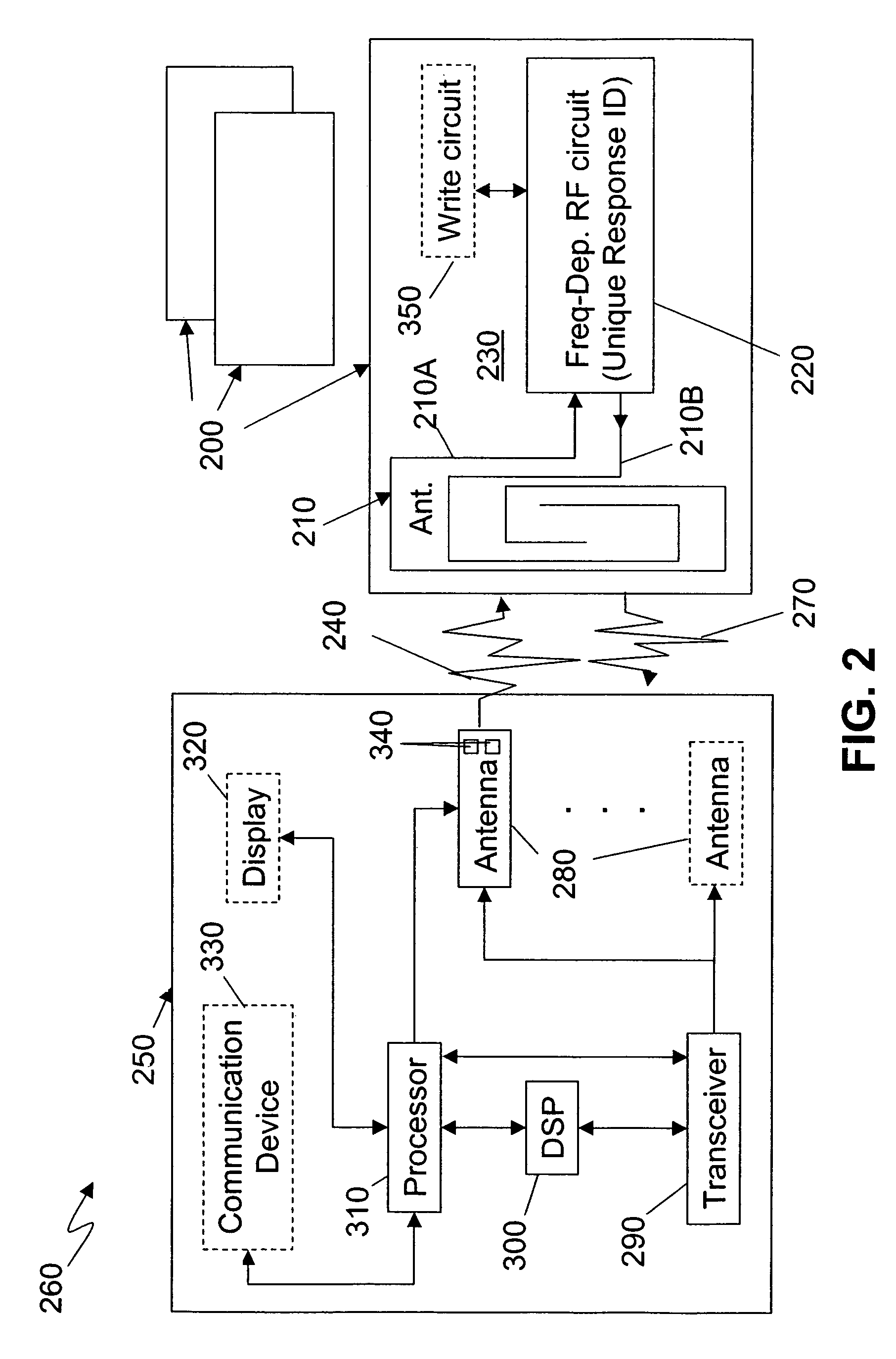Uncontrolled passive radio frequency identification tag and system with 3-D positioning
a radio frequency identification and passive technology, applied in the field of radio frequency identification tags, can solve the problems of significant limiting factors and interference with one, and achieve the effects of reducing power requirements, increasing the effective reading range of passive tags, and being easy to separa
- Summary
- Abstract
- Description
- Claims
- Application Information
AI Technical Summary
Benefits of technology
Problems solved by technology
Method used
Image
Examples
Embodiment Construction
[0014]A plurality of simplified frequency-dependent circuit passive radio frequency identification (pRFID) tags in according to one illustrative embodiment of the present invention is shown generally by symbol 200 in FIG. 2. Each of the PFRID tags 200 comprises an antenna circuit 210 and each have a unique frequency-dependent circuit 220. In one embodiment, the antenna circuit 210 and frequency-dependent circuit 220 are implemented on a substrate 230. In one embodiment, the substrate 230 is formed from silicon, a fibrous material, such as paper or cloth, plastic, or other inexpensive material, and combinations thereof. The antenna circuit 210 is formed as a pattern, such as for example, of two spaced apart deposits of conductive material as shown in FIG. 2. The conductive materials include metals, carbon ink, carbon filled polymer, or other suitable conductive materials. The conductive pattern may be printed, painted, or otherwise disposed on the substrate 230. In one embodiment, th...
PUM
 Login to View More
Login to View More Abstract
Description
Claims
Application Information
 Login to View More
Login to View More - R&D
- Intellectual Property
- Life Sciences
- Materials
- Tech Scout
- Unparalleled Data Quality
- Higher Quality Content
- 60% Fewer Hallucinations
Browse by: Latest US Patents, China's latest patents, Technical Efficacy Thesaurus, Application Domain, Technology Topic, Popular Technical Reports.
© 2025 PatSnap. All rights reserved.Legal|Privacy policy|Modern Slavery Act Transparency Statement|Sitemap|About US| Contact US: help@patsnap.com



